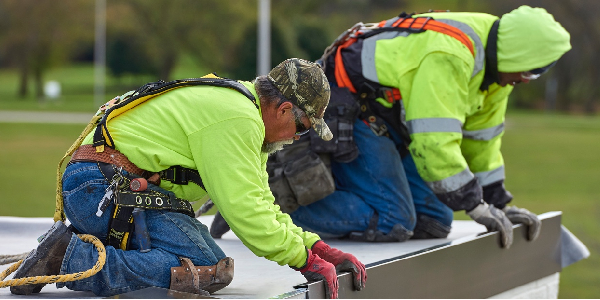Hurricane Season Survival Guide

By Lauren White, RCS Editor.
Help your customers weather storm season 2022 and keep a roof over their heads with these tips.
2021 was a whirlwind year for hurricanes and tropical storms. Colorado State University (CSU) predicts that 2022 will also be an above-average hurricane season. These predictions are based on models that use 40 years of historical data and evaluate conditions like sea level pressures, sea surface temperatures, El Niño and more. The CSU team anticipates that the U.S. will experience nine hurricanes, with four of them being major hurricanes!
Not only do these storms wreak havoc on the landscape, but also on homes and buildings. And roofs are no exception. These extreme weather events leave many people without roofs or with significant roof damage, which is when they turn to you, the experts. Here are a few ways you can help your customers prepare for this upcoming storm season.
Reach out to your customers now
It’s likely that building owners don’t think about their roof until it needs replacing or repairing. Encouraging them to have their roofs inspected before storm season hits, will minimize damage and ensure that their roofs are ready to perform this season.
Establish service level agreements for your customers
Consider developing a service agreement that offers building owners who commit to a longer-term care and maintenance package a prioritized response following severe weather. This allows you to better plan your follow up, scheduling out checkups and repair visits for your regular customers. It also provides peace of mind for the building owner who knows they will already be on your list for post-storm response and won’t have to spend time scrambling to find a contractor.
Insurance
Have them double check their insurance policy. It’s not uncommon to need multiple insurance policies to cover damages – wind, water, etc. – that could occur due to hurricanes or other severe weather events.
After the storm has passed, you can help them assess if there is any damage to the roof. By documenting the damage, noting the severity and taking photos, you are providing information that will be critical in the event they need to file a claim to help cover repairs.
Help them choose a roof that will last
If the damage to their roof is too severe to repair, encourage your customers to choose a roof that will last. Building codes and standards are developed by independent laboratories and industry groups, which roofing manufacturers must adhere to. These codes and standards are updated on a regular basis to ensure buildings are protected. According to the Insurance Institute for Business and Home Safety (IBHS), “design wind speeds are much higher along coastal areas of the hurricane-prone regions... The design wind speed is used directly in the selection of roofing products and their installation specifications.”
As the codes have been adapted throughout the years, so too have roofing materials. And while these materials are better able to withstand the extreme elements they’re exposed to – fire, wind, hail, snow – some materials are more suitable for hurricane-prone areas than others due to their high wind resistance, like Duro-Last. The custom-fabrication of each roof means that 85 percent of the seams are completed before the system arrives on the jobsite, ensuring a quality weld that stands up to wind*.
Duro-Last's single-ply commercial roofing systems are designed to be watertight, resistant to a variety of chemicals, fire and high winds* and low-maintenance, making them an ideal system for busy building owners who are in regions where hurricanes are prevalent.
Help your customers weather the storms this season with these tips.
Learn more about Duro-Last in their RoofersCoffeeShop® Directory or visit duro-last.com.
*Specific wind load information can be found on the Duro-Last website, or by calling 800-248-0280.






















Comments
Leave a Reply
Have an account? Login to leave a comment!
Sign In